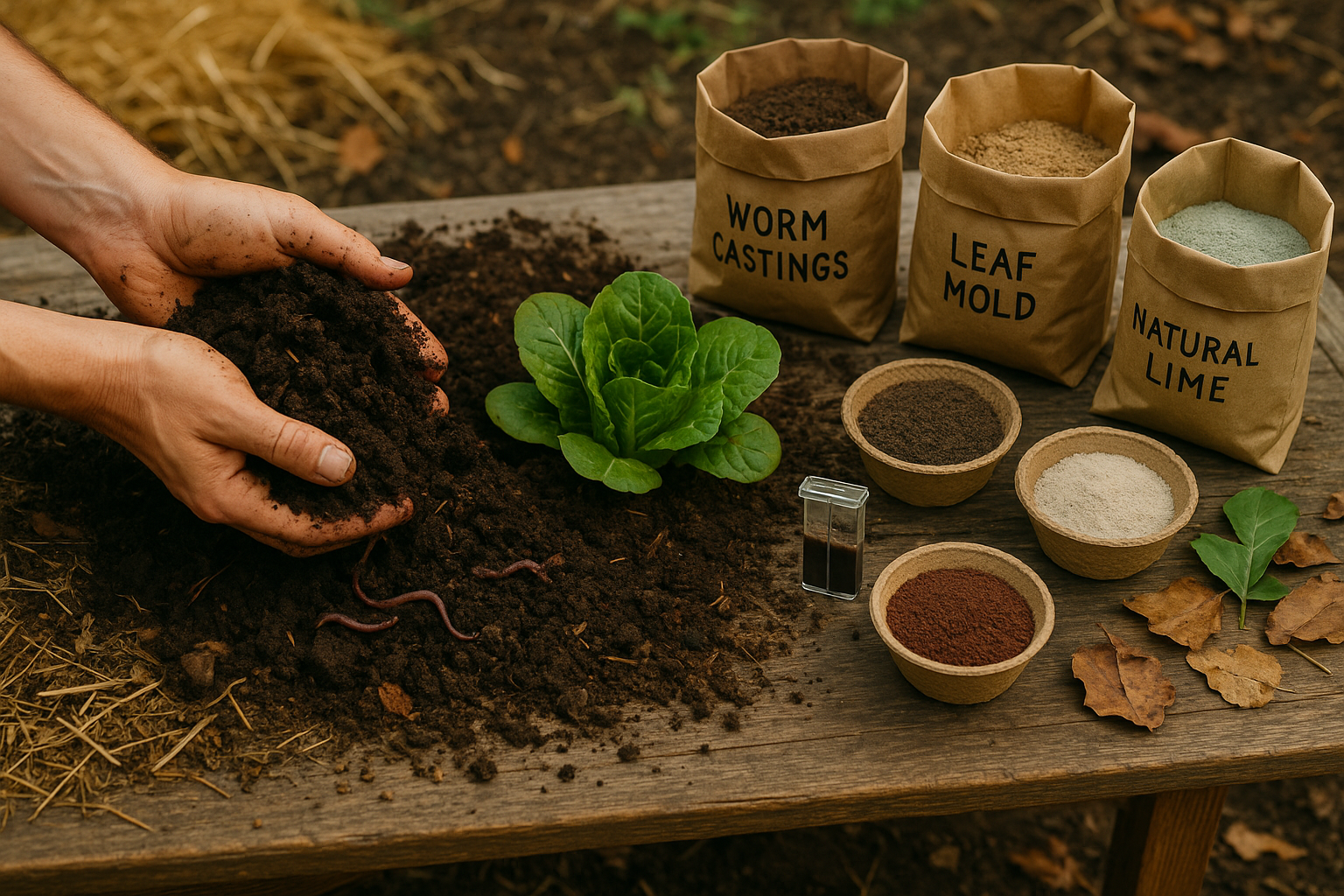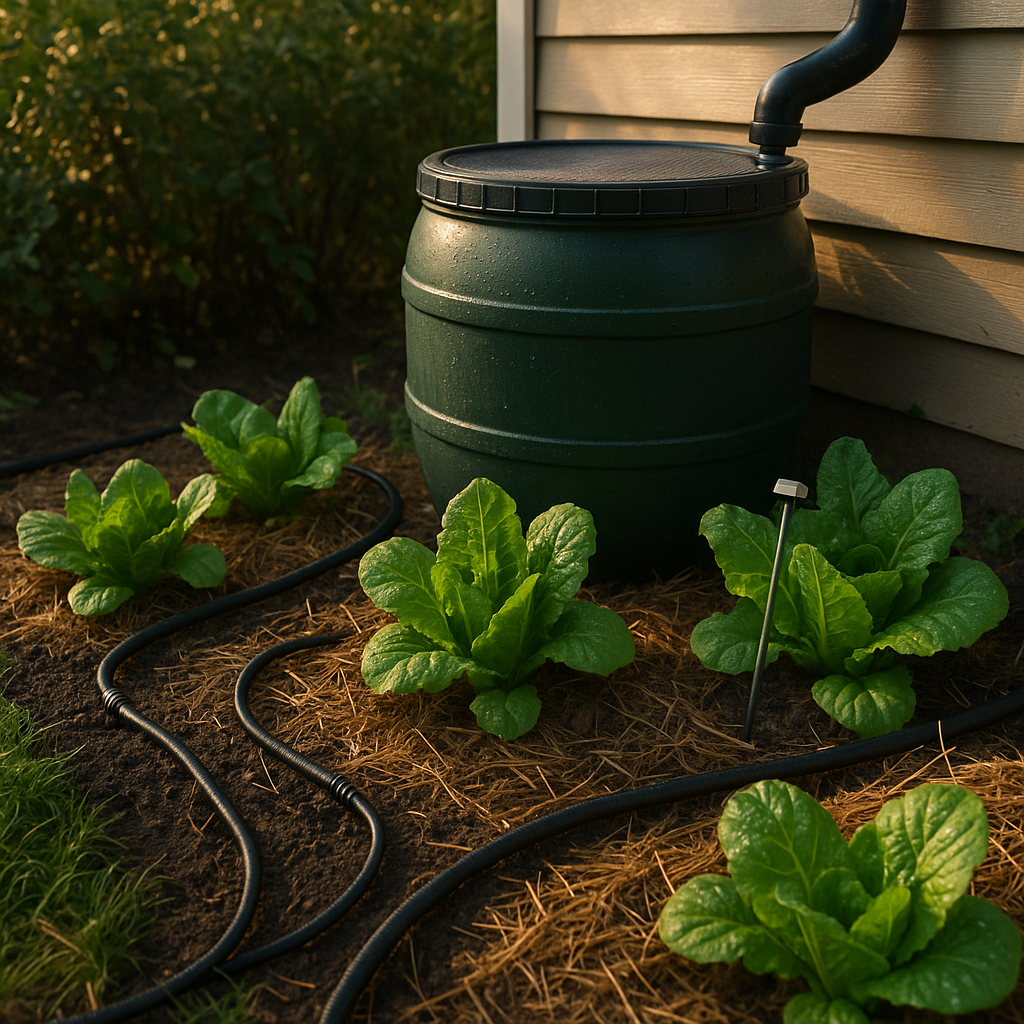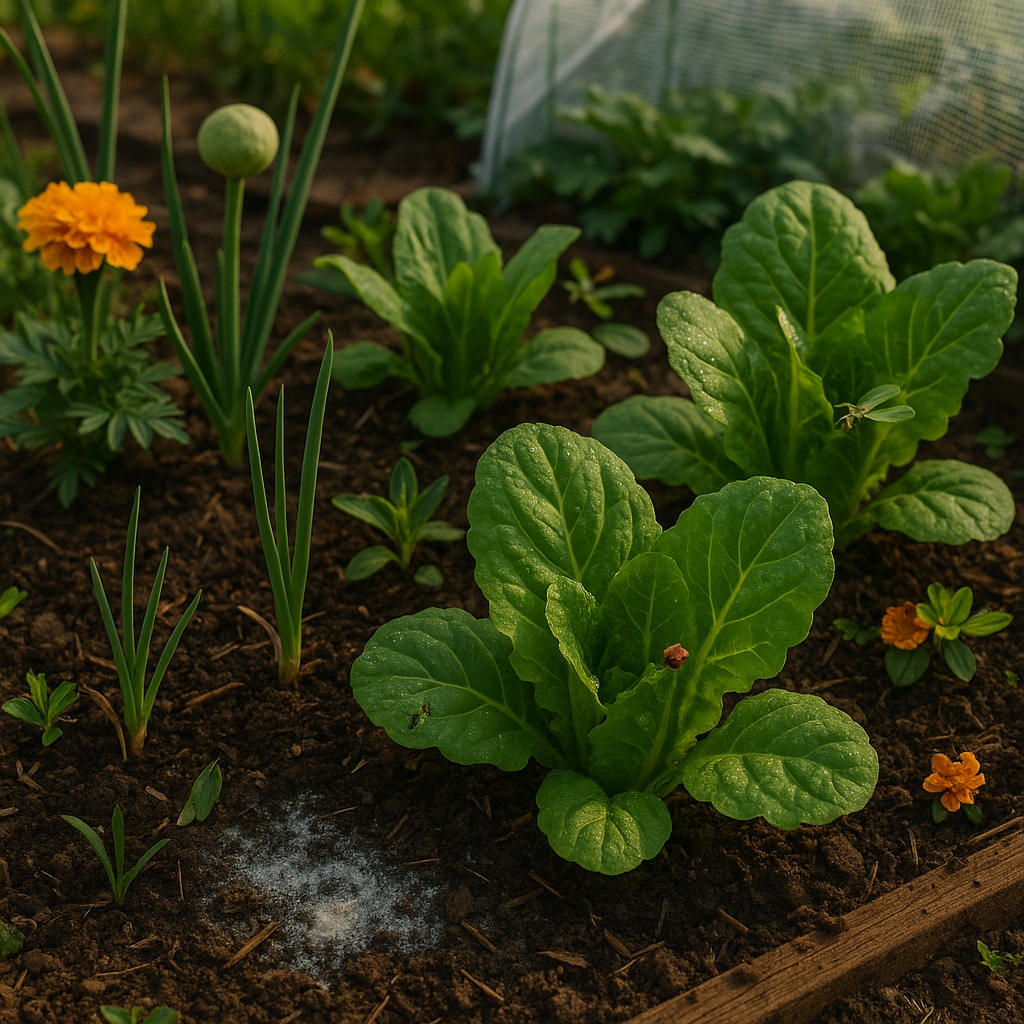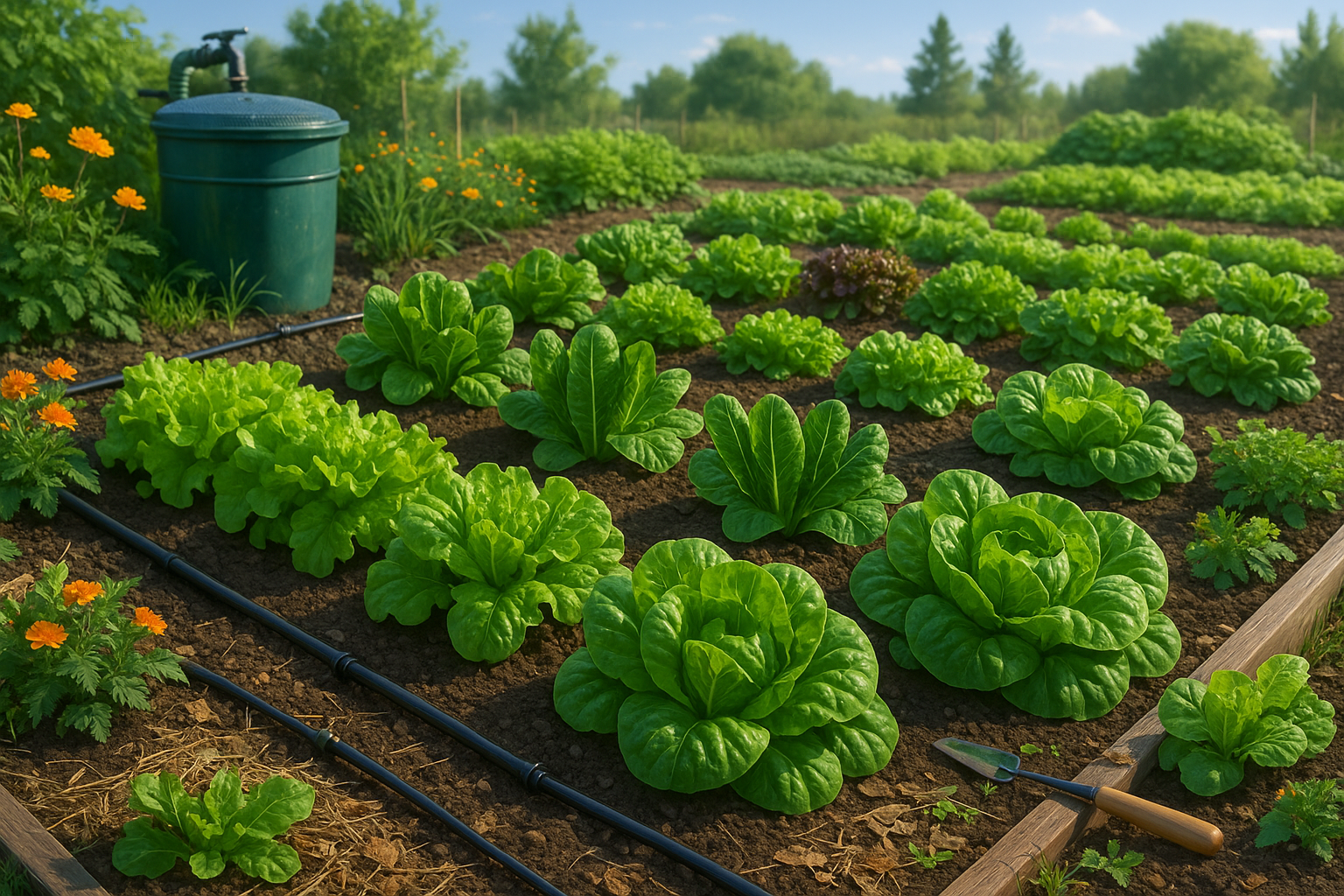How to Grow Lettuce Sustainably (Eco-Friendly Practices)
Growing lettuce sustainably is an eco-friendly choice that helps protect our environment while providing you with delicious, homegrown greens. Conventional lettuce farming often relies on synthetic fertilizers, pesticides, and excessive water use, which can lead to soil degradation, water pollution, and a loss of beneficial insects.
By adopting sustainable practices such as organic soil enrichment, water-efficient irrigation, natural pest control, crop rotation, and seed saving, gardeners can reduce their environmental footprint and support healthy ecosystems.
These simple methods not only make your garden more resilient but also ensure tastier, healthier lettuce for your table, all while promoting a greener planet for everyone.
Introduction
Sustainable lettuce growing isn’t just a trend—it’s a rewarding approach that benefits your health, your wallet, and the planet. Many of us don’t realize that conventional lettuce farming often relies on heavy pesticide use, synthetic fertilizers, and water-intensive practices. This not only affects the taste and nutritional value of your greens but also leaves a significant ecological footprint through soil degradation, high carbon emissions, and water pollution.
Growing your own lettuce using eco-friendly methods flips that narrative. Imagine harvesting crisp, fresh leaves right from your balcony or backyard—knowing your greens are free from harmful chemicals and that your practices conserve resources for future generations. Whether you’re new to growing or simply want to lessen your environmental impact, there are smart, practical strategies you can adopt.
In this article, we’ll explore how to select organic seeds, make your own natural compost, utilize efficient watering systems, and repel pests without synthetic chemicals. You’ll see how growing lettuce sustainably isn’t just possible—it’s practical, highly satisfying, and surprisingly simple. If you’re ready to enjoy tastier salads and a cleaner conscience, read on for easy steps to start your own eco-friendly lettuce patch.
Choosing the Right Lettuce Varieties for Sustainability
When it comes to sustainable gardening, picking the right lettuce variety can make a meaningful difference. Loose-leaf lettuces are often the most environmentally friendly, thanks to their quick growth, cut-and-come-again harvest style, and adaptability to various climates, which minimizes water and resource use.
Romaine lettuces offer disease resistance and thrive in moderate climates, making them efficient choices for regions where they can grow without excessive intervention. Butterhead lettuces, while tender and delicious, sometimes require more care and protection from pests, potentially increasing resource input unless you opt for robust, disease-resistant strains.
Crisphead varieties (like iceberg) may seem familiar, but they generally demand more water, cooler temperatures, and longer growing periods—making them less sustainable unless you live in a naturally cool, moist climate.
Regardless of the type, always seek out organic, non-GMO, or heirloom seeds, as they support healthier ecosystems and encourage biodiversity. Heirloom varieties, in particular, are often better suited to local conditions and can be more resilient against local pests and diseases.
Opting for locally adapted or disease-resistant cultivars is another smart move—these plants can thrive with fewer fertilizers and pesticides, decreasing your garden’s environmental footprint. For example, varieties like ‘Parris Island Cos’ (romaine) or ‘Buttercrunch’ (butterhead) are known for their vigor and adaptability, reducing the need for chemical assistance.
By combining thoughtful lettuce selection with sustainable seed sourcing, you’ll cultivate a crop that’s good for your salad bowl and the planet.
Preparing Your Soil Naturally

Healthy soil is the backbone of any successful, sustainable lettuce garden. By focusing on natural soil preparation, you’re building a foundation for thriving plants while preserving the environment.
Start by enhancing your soil’s fertility with quality compost—whether homemade or store-bought organic compost. This can dramatically boost microbial life, improve soil structure, and add essential nutrients without relying on synthetic fertilizers. Consider mixing in natural amendments like well-rotted manure, worm castings, or leaf mold to further nourish the soil.
Before planting, take time to test your soil. Simple at-home test kits, available at garden centers, require just a scoop of soil and a little water. These kits reveal your soil’s pH and basic nutrient levels within minutes. Lettuce prefers slightly acidic to neutral soil (pH 6.0–7.0). If your pH is off, organic solutions like lime (to raise pH) or elemental sulfur (to lower it) can gently bring it into balance.
For nutrient gaps, use targeted amendments such as blood meal for nitrogen, bone meal for phosphorus, or greensand for potassium.
Once your soil is prepared, add a layer of natural mulch—straw, shredded leaves, or untreated grass clippings—to lock in moisture and prevent weed growth. Unlike synthetic weed barriers or chemical sprays, mulch breaks down slowly, adding even more organic matter to your soil over time.
This holistic approach not only grows better lettuce but also protects earthworms and beneficial microbes, helping your entire garden ecosystem thrive season after season. With these simple natural steps, your soil becomes richer and healthier each year, setting the stage for crisp, delicious lettuce without harmful chemicals.
Managing Water Responsibly

Conserving water is crucial when growing lettuce sustainably. This leafy vegetable relies on consistent moisture but can suffer if its needs are met wastefully. By being intentional with water use, gardeners and farmers not only reduce their environmental impact but also help ensure a healthy, thriving crop.
Several water-saving techniques can make a big difference:
- Mulching: Using materials like straw, grass clippings, or shredded leaves around lettuce plants helps keep the soil moist longer by blocking evaporation. It also minimizes weeds that compete for water.
- Targeted watering systems: Drip irrigation or soaker hoses deliver moisture directly to the root zone where lettuce needs it most, rather than wasting water on leaves or between plants.
- Rainwater collection: Setting up a barrel beneath gutters provides a free, natural water source. Use a mesh cover on your barrel to keep out debris and mosquitoes. You can water your lettuce bed with a watering can or attach the barrel to a soaker hose for efficiency.
- Proper timing: Watering lettuce early in the morning or after sunset helps minimize water lost to evaporation, giving plants ample time to absorb moisture before the sun gets too strong.
By combining these techniques—mulching, efficient irrigation, smart rainwater use, and careful timing—you’ll use every drop wisely, conserve a precious resource, and grow crisp, delicious lettuce with a lighter footprint.
Natural Pest and Disease Control

Lettuce, popular for its crisp texture and versatility, is unfortunately prone to several pests and diseases. Common culprits include aphids, slugs, snails, caterpillars, and downy mildew, which can leave leaves yellowed or riddled with holes.
To keep your lettuce beds healthy without resorting to harsh chemicals, prevention is key.
Crop rotation—planting lettuce in a different spot each year—prevents the buildup of pest populations and soil-borne diseases. Pairing lettuce with companion plants like garlic, onions, or marigolds can also naturally deter unwanted insects due to their repellent aromas.
If you spot early signs of pests, act quickly by handpicking slugs or gently washing aphids away with a hose; these manual methods can save an entire row of lettuce if done consistently. For more persistent pests, eco-friendly deterrents like neem oil (a natural insecticide from the neem tree) can disrupt pest life cycles without harming beneficial insects or people.
Dusting the soil and leaves with diatomaceous earth forms a physical barrier to crawling insects, while lightweight insect netting keeps out flying pests like cabbage moths without trapping beneficial pollinators.
Speaking of helpful insects, encouraging natural predators—like ladybugs, lacewings, or hoverflies—can make a significant difference in pest control. Attract these allies by growing a variety of flowers and herbs such as dill, fennel, or alyssum near your lettuce patch.
Regularly inspect your plants for early signs of disease, and promptly remove any affected leaves to prevent their spread.
Combining these sustainable strategies not only protects your lettuce crop but also supports a vibrant, healthy garden ecosystem overall, reducing the need for chemical interventions and promoting long-term resilience.
Sustainable Harvesting and Post-Harvest Care
Sustainable harvesting begins by picking lettuce early in the morning when it’s crisp and cool. Use a sharp, clean knife or scissors to avoid bruising the leaves and make a clean cut just above the soil. Instead of pulling up the entire plant, try the “cut-and-come-again” method: harvest only the outer leaves and allow the center to keep growing. This way, you can enjoy multiple yields from the same plant while preserving its vitality.
To minimize waste, inspect leaves as you harvest and set aside any damaged or yellowed ones for compost rather than disposal. After harvesting, lettuce can wilt quickly, but you can keep it fresh without relying on single-use plastics or chemicals. Place the freshly picked leaves in a bowl of cold water for a few minutes to crisp them up, then gently dry them with a clean kitchen towel.
Store the leaves in a reusable container lined with a damp towel or cloth, and keep them in the fridge’s vegetable drawer to maintain humidity and extend shelf life. To further reduce waste, lettuce trimmings and older leaves can be composted easily—just chop them roughly and add them to your compost bin or pile. Mix them with drier materials like straw or shredded paper to balance the moisture.
This not only diverts organic material from the landfill but also returns valuable nutrients to your garden soil, creating a closed-loop system that supports healthier future crops.
Closing the Loop
Composting leftover lettuce and garden scraps is a simple yet powerful way to reduce waste and create rich, nourishing soil for your garden. Start with a designated compost bin or pile in your yard, and regularly add kitchen scraps like lettuce ends, coffee grounds, eggshells, and garden trimmings—just avoid meat and oily foods that can attract pests.
Turn your pile every week or two to help it break down faster, and keep it moist but not soggy. Over a few months, this organic waste transforms into dark, crumbly compost that can be mixed into garden beds to boost plant health naturally.
Alongside composting, seed saving is a smart way to make your garden more sustainable. When you harvest lettuce or other vegetables, choose the healthiest, tastiest plants, let them go to seed, and then collect and dry the seeds for planting next season. This not only saves money but also preserves varieties that thrive in your unique garden conditions—reducing your reliance on store-bought seeds.
Together, composting and seed saving close the gardening loop by recycling nutrients and genetic diversity right where you grow, minimizing waste, cutting costs, and nurturing an eco-friendly garden that evolves year after year.
Conclusion
Embracing sustainable gardening practices like composting, using natural pest control, and conserving water not only boosts your lettuce harvest but also helps the planet. By opting for organic fertilizers and rotating crops, you’ll enrich the soil and reduce waste.
Growing lettuce the eco-friendly way means fewer chemicals in your food and a smaller carbon footprint. Plus, tending your own garden can be rewarding and therapeutic. Whether you have a spacious yard or a small balcony, it’s easy to start.
Make the switch today—your health, your wallet, and the environment will thank you for it.
